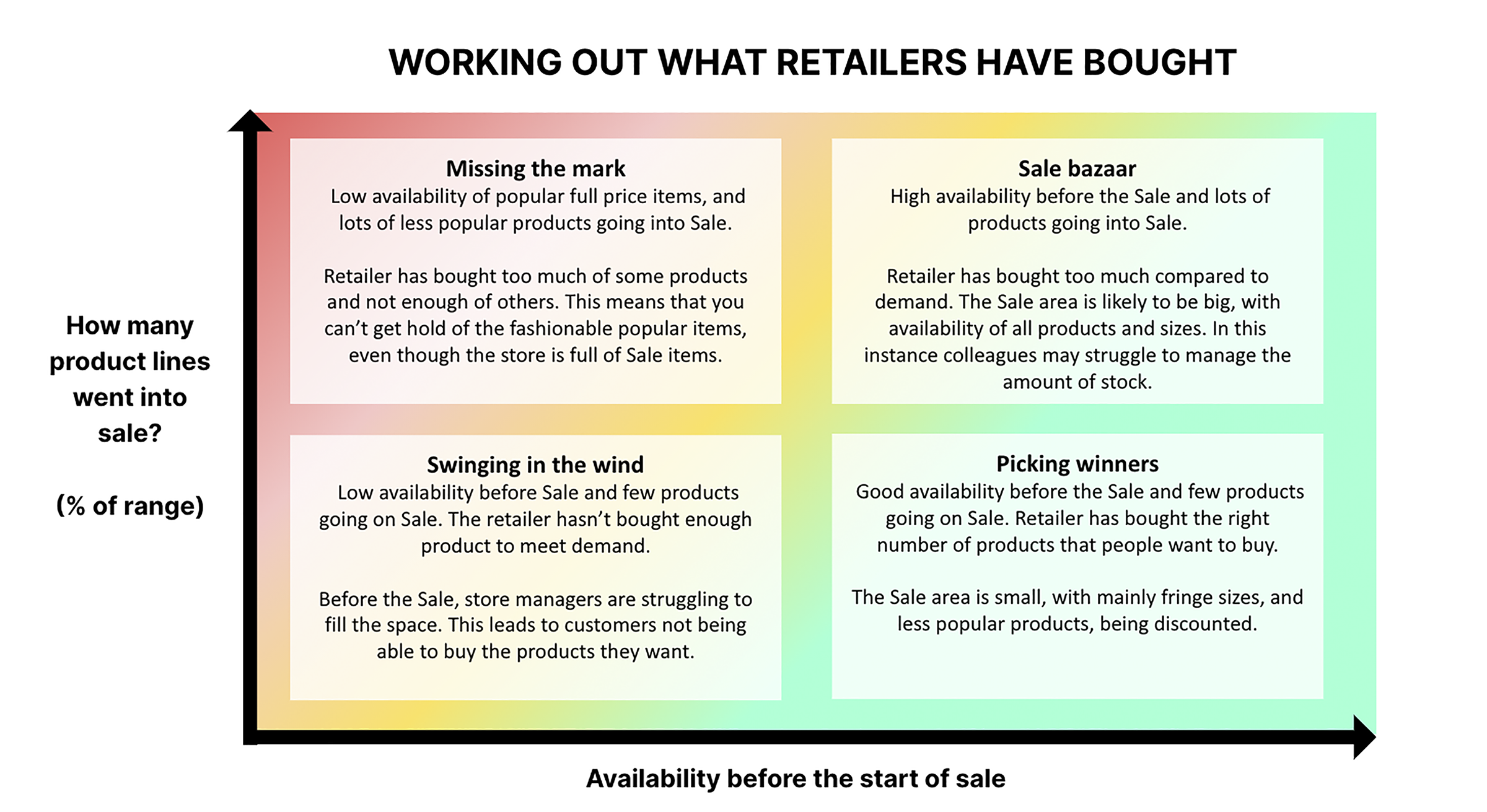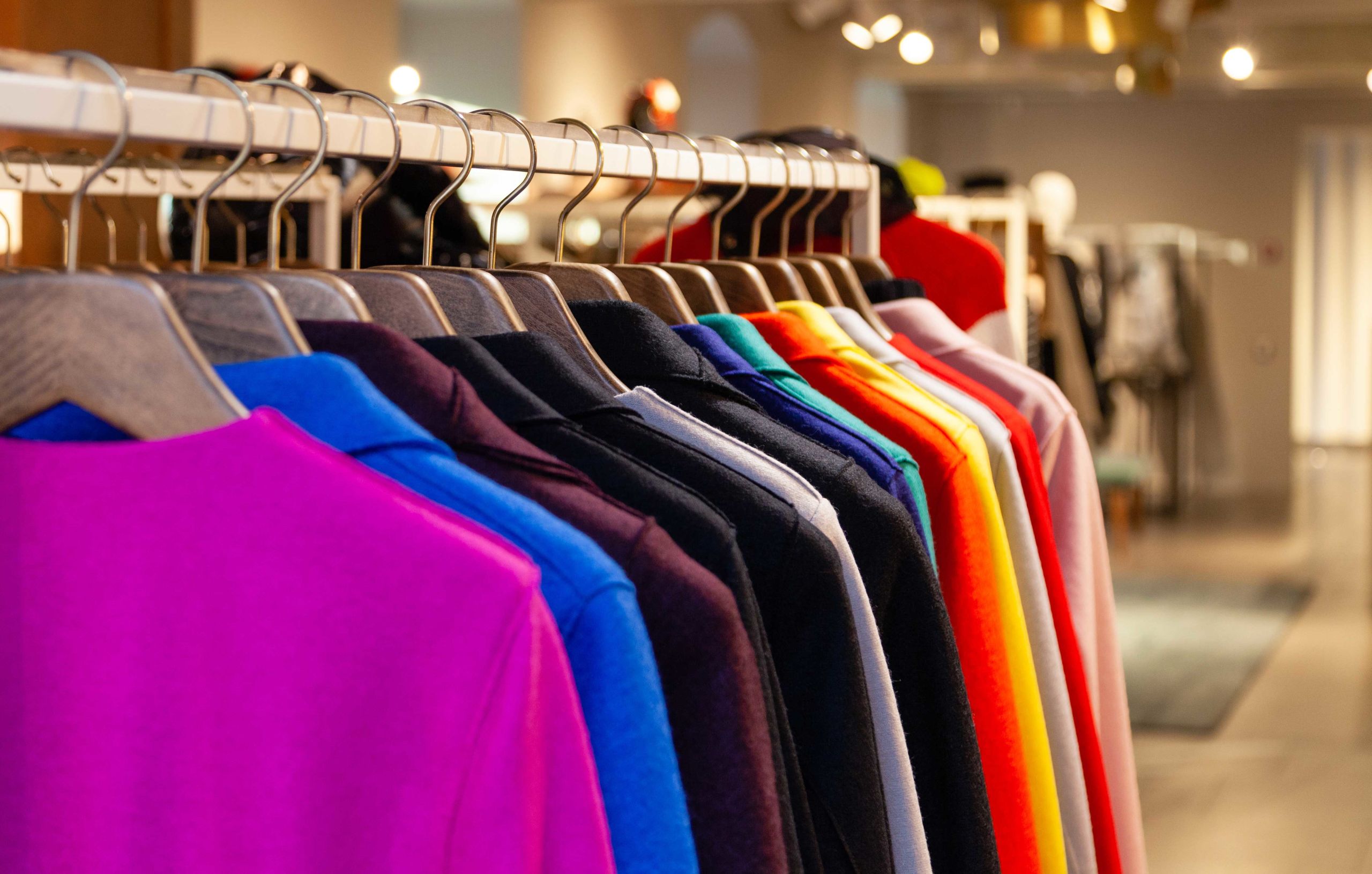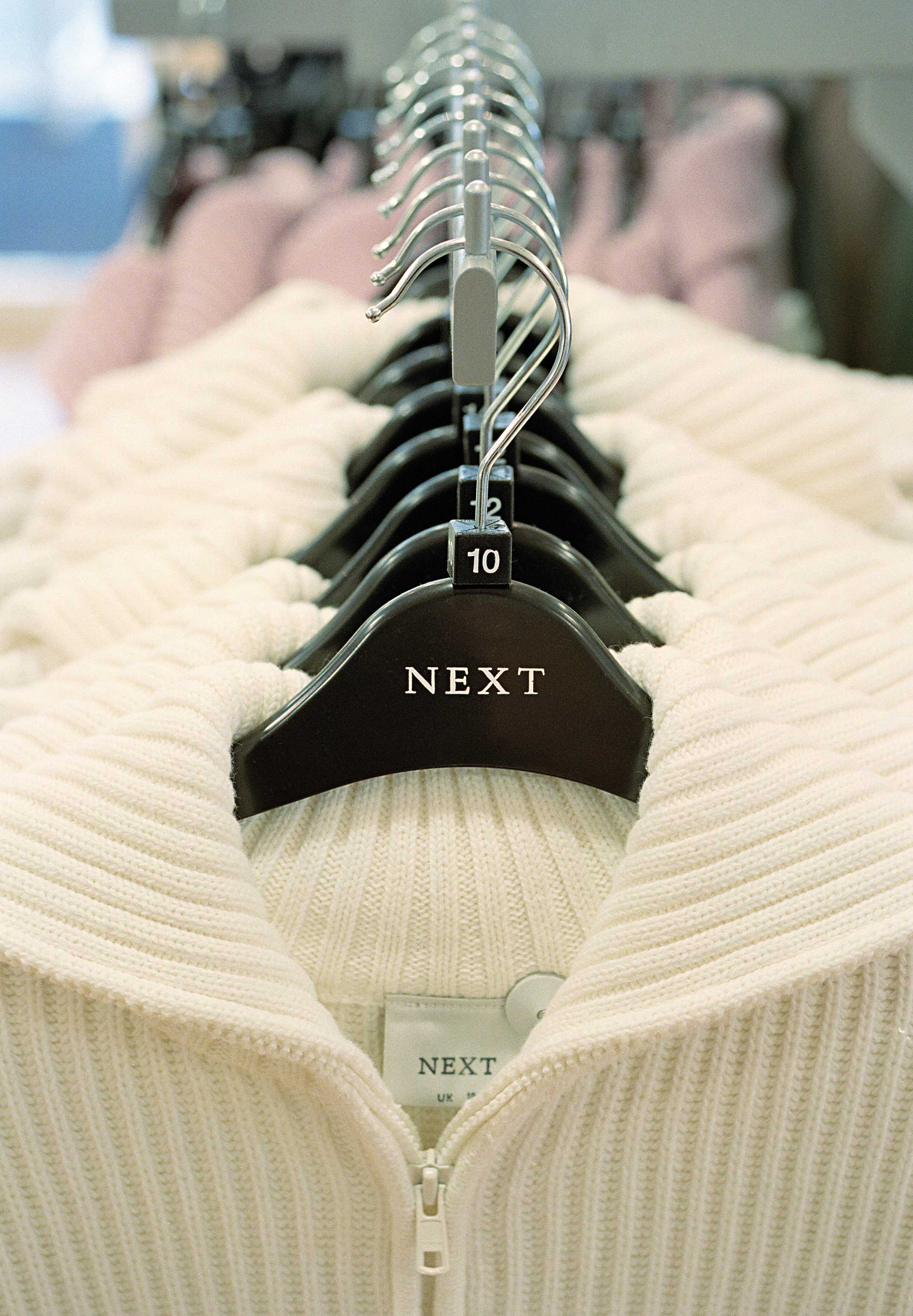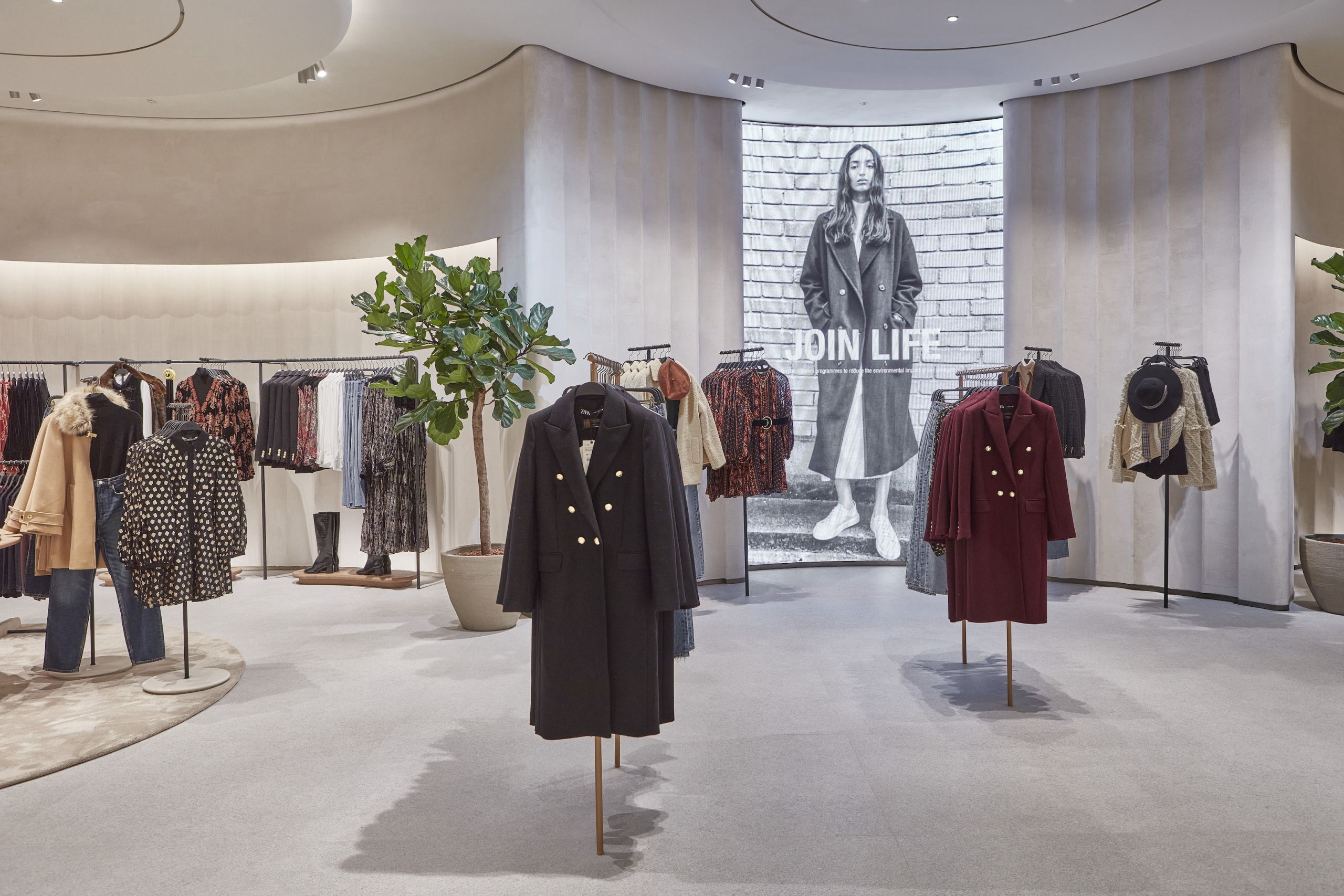Scrutinising the Sales: Which fashion giants got their peak buying right?

- Analysis by Retail Week and Newton shows how much stock nine of the biggest UK womenswear retailers put into Sale post-Christmas and how deep discounts were
- Next, Zara and Sainsbury's Tu label nailed their buying over peak. Discover how they got their strategy right
- One young fashion etailer marked down a whopping 84% of products before the start of its Sale period. Experts believe this is a strategic move to boost its value credentials with shoppers
The New Year Sales are an important part of the retail calendar and what a retailer does during this period can provide an indicator to the wider health of the business, especially after Christmas.
A mountain of Sales stock screams that a business has overbought or missed the season’s big product trends and is therefore throwing away margin.
This area of retail has become a lot harder over the past year as consumer-demand patterns have been volatile, with party dresses firmly locked away in closets and jogging bottoms and athleisure becoming the new uniform for stay-at-home consumers.
Superdry global merchandising director Lucy Maitland Walker says this has made it a lot harder to pick the winners.
“What we’ve seen from a bestseller perspective has been very different. We’re predominantly a menswear brand, but in spring/summer 21 womenswear is outperforming men’s, which is unheard of for Superdry,” she says.
Retail Week has teamed up with Newton, an operational transformation consultancy that specialises in retail, to analyse how nine of the UK’s biggest fashion retailers fared during the New Year Sales.
The results paint a stark picture with some retailers getting their product mix and depth right and some getting it very, very wrong.
Delving into the data
One of fashion retail’s greatest challenges is deciding what products customers will want and how popular they will be.
“Getting this right means products sell quickly at full price, with not a lot left over, which creates room for the next set of good products,” says Newton director Georgia Wickes.
“Getting it wrong means that good products will run out too soon, leaving stores and sites full of the less popular and slow-moving products, which will almost inevitably end up being marked down to make room for the next season.”
By plotting two core data points – the availability of products before Sale and what percentage of the product range went into Sale – it is easy to establish whether fashion retailers got their buying right for the core golden quarter.
If we divide the graph into four quadrants, where retailers sit tells the story, both in how well they pick their product winners and the strength of their Sales strategy.

The challenge
The big challenge for fashion retailers is the long lead time most businesses work to. Some brands make buying decisions more than six months in advance to allow for fabrics to be sourced and garments to be manufactured and then shipped around the world.
This means retailers are using long-range forecasts to predict what customers actually want, according to Newton partner Christian Hansen.
He says calculating buying volumes is an “extremely complex ask”. It should involve customer trends, determining the relative popularity of each product, what you can sell, past performance of similar products, how marketing plans will boost sales, and whether other products in the range will eat into sales.
Former M&S style director Belinda Earl, now non-executive director at Woolworths Holdings, says: "Customer insight, buying, merchandising and marketing need to work together in real time, especially at the point when the buying decision is made.
"They should use historical, predictive and comparative data to make more accurate decisions. This is critical to managing the full price sell through, the profitability of the buying decision, and ultimately the success of the business."
“Customer insight, buying, merchandising and marketing need to work together in real time, especially at the point when the buying decision is made.”
But life is made more challenging by retailers having limited data on more trend-led products.
“The exciting items are, by definition, new products and so there is no past data to go on. In our experience, while merchandisers can access historical data and pick products they think are similar, it can perpetuate the mistakes of the past,” says Hansen.
“For example, if a previous product was underbought then the data will not show its full sales potential. Using this data for a similar product might lead to more underbuying in the future.”
Most merchandisers don’t have sophisticated data analysis that allows them to model the additional sales that could have been made if past products hadn’t sold out.
Add to that the pressure of having entire sales channels, such as the whole store estate, taken out of action and a minefield of unknowns is created for product teams to navigate.

How the UK’s top womenswear retailers fared
There are some obvious trends that indicate how the UK’s fashion giants have approached the golden quarter in this very different year.
Fashion retailers 2 and 3, along with a supermarket, appear to have been too conservative in their buys as product availability was low before Sale and fewer products went into their Sale.
Maitland Walker says this is understandable as fears were rife about further lockdowns earlier in the year. For bricks-and-mortar retailers, having your largest sales channel unavailable with ample stock to sell is a precarious position to be in.
“Christmas was a very dangerous time. The financial burden of that stock is enormous for any company. Buys were kept tight because there was talk that there would be further lockdowns," she says.
Wickes says: “Conservatism in the face of uncertainty means that it’s tough to gamble on a few top products with a big buy. It’s equally tough to admit that some products will only sell a small amount as this is essentially saying that they aren’t that good – in which case, why buy them in the first place?”
“Christmas was a very dangerous time. The financial burden of that stock is enormous for any company. Buys were kept tight because there was talk that there would be further lockdowns”
However, not all retailers have displayed such conservatism. Three retailers sit in the top-right quadrant of the graph and therefore had high availability of products and a high percentage of products being marked down, which would suggest these businesses bought too much.
Interestingly, two of the businesses in question are young fashion etailers, which did not have to navigate the headache of store closures.
Maitland Walker says this is likely a strategy for young fashion etailers such as Boohoo.
“It’s their model – they plan for their markdown percentage to be much higher than a brand like Superdry. That’s what customers of brands like Boohoo expect – it reinforces their value credentials,” she says.
In fact, one young fashion etailer had 84% of products on markdown before the official start of their January Sales.
Although this is an approach that clearly works for value fashion etailers, it is a dangerous approach for more mainstream retailers.
Maitland Walker says: “We pride our services on quality; therefore discounting isn’t the route for our brand.”
The brands getting it right
Three of the brands monitored – Sainsbury’s Tu, Next and Zara – sat comfortably in the bottom right-hand quadrant of the graph, the optimum place for fashion retailers to reside

Spotlight: How Next cut its cloth accordingly
It is no surprise that Next has emerged as one of the shining examples. The retailer is lauded as one of the best run businesses on the high street.
Next, which avoids discounting outside its much-anticipated end-of-season Sales, made sure its stock levels were well managed. In fact, surplus stock going into markdown was down 12% on last year’s level, despite the volatile trading conditions.
When the pandemic hit in March, the retailer managed to reduce its stock holding by “much more than anticipated”, according to boss Lord Wolfson. As well as cancelling orders, the retailer reduced future orders in the first half, which has helped it cut its cloth accordingly during the golden quarter.
However, Wolfson said it had “empowered individuals and small teams to make more decisions outside the corporate machine”.
“With hindsight, it appears that the corporate machine was supporting the inexperienced and the less able, but holding back the strong”
In buying, where teams have successfully developed and selected ranges remotely, he says the result has been “more focused, more frequent and fast decision making”.
“For many, this has been liberating and the best people have increased and improved their creative output. With hindsight, it appears that the corporate machine was supporting the inexperienced and the less able, but holding back the strong,” he says.
Wickes says empowering buyers and merchandisers to make their own evidence-based decisions is critical.
“Buying teams lose a lot of confidence when decisions get changed repeatedly for reasons that they can’t understand,” she says.
“Setting expectations for how decisions get made and what a merchandiser needs to do to get senior sign-off on their order will build confidence in the teams. And confident teams place confident buys, rather than spreading themselves too thinly and hedging their bets,” she says.
Next also benefited from its online strength – pre-pandemic, more than half its sales came from ecommerce, meaning its most dominant sales channel was still operational throughout the golden quarter – and its product prowess in areas that were less impacted by the pandemic, such as childrenswear.

Spotlight: Tu benefits from essential retailer status
Tu had the benefit of trading from all sales channels across a golden quarter blighted by store closures during lockdown as owner Sainsbury’s was classed as an essential retailer. This means buyers could feel more confident when buying large volumes.
Tu sales were up 0.4% in the quarter to January 1, compared with declines throughout 2020. Sainsbury’s boss Simon Roberts said “gross margins benefited from better-than-anticipated full-price sales, driven by customers shopping earlier for Christmas and successful changes to our Black Friday trading strategy”.
The fact that just 11% of Tu products went on Sale suggests a confidence that shoppers would continue to shop for autumn/winter products post-Christmas. With supermarkets the only bricks-and-mortar destinations selling fashion, this confidence was well placed.
Notably, Tu also opted for deep discounts during its Sales, suggesting that it wanted to clear stock from stores quickly to introduce new lines.

Spotlight: Zara’s short-order strategy pays off
Zara’s fast fashion credentials have helped it weather the storm.
The retailer, which owns its own supply chain, commits to very low numbers of products at the beginning of a season and buys trend-led garments during the weeks that follow, with designs getting from the page and onto hangers within three weeks.
The super-quick turnaround relies on Zara’s team being interconnected. Store managers are the conduit to customers and relay both sales data and customer feedback to its commercial team, who then work with the designers, who sit alongside them in Inditex’s 160,000 sq m head office in Arteixo, northern Spain, to tailor the collection to customer demand.
New designs are produced in small batches and arrive in stores within weeks. The small production run, combined with its incredibly quick production – which relies on proximity sourcing for more trend-led products – and delivery times, enables it to back its winners and disregard unpopular items.
This means Zara does not have one collection per season, but constant waves of products.
Although few retailers own their own manufacturing base like Zara, many have embraced its short-order approach.
Boohoo has a ‘test-and-repeat‘ approach to buying, whereby it produces small batches of new styles, sometimes just tens or hundreds of one product, and then ramps up production when it has evidence that it is selling fast.
Maitland Walker says Superdry has also been testing and trialling products, tapping into social media to find out what its shoppers are looking for in season.

How to nail buying volumes
Getting buying right involves both art and science – the art of creating beautiful products that people covet and the science of using consumer and past sales data to forecast volumes.
In this new data-driven world of retail there is lots of information available, particularly through ecommerce. Maitland Walker says her merchandisers, who were all focused on ecommerce over the golden quarter, now need to examine some very different metrics.
“We look at page views, conversion data, CRM data and a lot of data analysis and AI to make decisions,” she says.
Harnessing such data, which often sits with customer insights teams, involves collaboration. Data should not only be shared, but translated to make it easily understandable across teams not made up of data scientists.
Upskilling merchandisers in the world of data science could help this team, which Hansen refers to as “great generalists” who are creative, commercial and analytical, make better data-led decisions.
“Retailers that want to change the game could do worse than to invest in this group and redefine the role to be a unique mix of artist and scientist,” he says.
Wickes says there is a wealth of data that can be used to inform buying decisions, from behavioural data based on channel and location to competitor analysis and detailed cost data.
“The retailer that has the vision to really get data scientists and traders at the same table, pull everyone’s heads out of last week’s trading results and invest the time in really innovating both what is bought and how the buying decision is made could potentially not just change but reinvent the game,” she says.
Giving everyone access to such data across buying and merchandising can also help teams visualise buys and interrogate decisions.
“Don’t underestimate the power of the basics. In one large retailer, putting simple shared visibility of the size and shape of the buys in place for merchandisers and managers was worth £8m of margin improvement. It led to more products selling at full price and less going into Sale,” says Wickes.
Collaboration is key, not just across merchandising and customer insight, but many other functions.
Maitland Walker says her team is now working closer with teams such as ecommerce trading to get real-time customer behaviour information, as well as marketing and social to better launch products online and make sure promotional plans are in line with buying volumes.
“Retailers can help create more of these winning teams by challenging the time spent on admin, meetings and data entry, and replacing it with time spent sharing information, understanding and working together”
Hansen says this is a smart move. “The decisions on what to market are sometimes made in isolation to the buying process. The activity designed to drive up product sales of a particular product isn’t always linked to numbers of products ordered,” he says.
“The retail world is now too complex for one person, or skill set, to lead. It’s long been said that a good merchandiser and buyer pairing is a winning combination.
“Retailers can help create more of these winning teams by challenging the time spent on admin, meetings and data entry, and replacing it with time spent sharing information, understanding and working together, not just on today’s problems but the challenges of the future, too.”
By harnessing not just the data but the skills across retail organisations, from marketing and customer insight to buying and merchandising, retailers can make sure they truly understand what their customer wants and how they will buy.





















